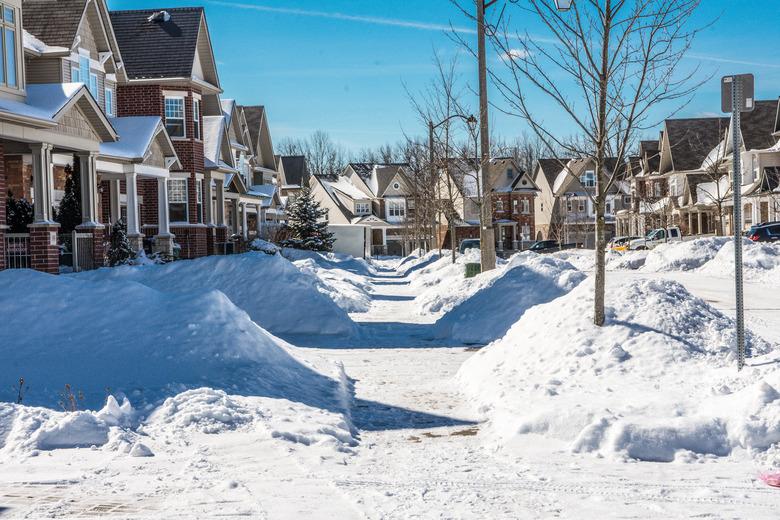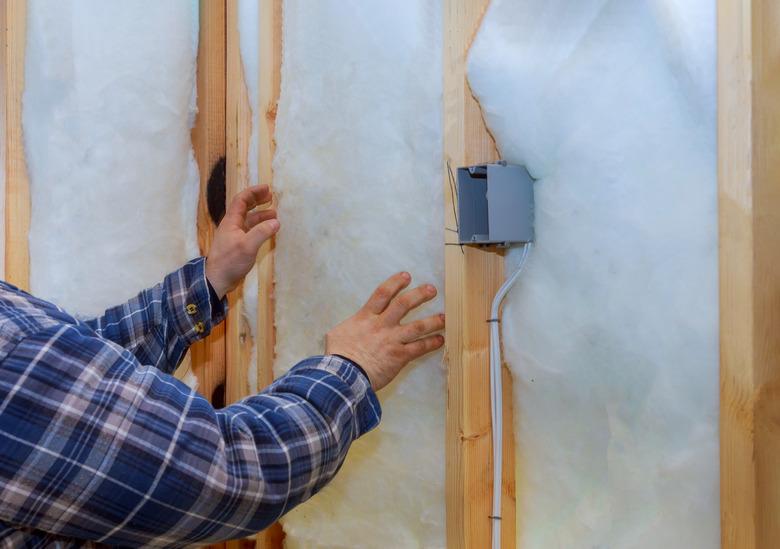How Much Insulation Do I Need?
Unless you happen to live in one of those blessed climates where temperatures are moderate all year long (think San Diego or Maui) your home probably requires insulation in the walls at attic ceiling to help reduce winter heating costs and/or summer cooling costs. When it comes to home insulation, there's no point in overdoing it and spending more money than necessary for little extra benefit, but you definitely don't want use too little. Improper insulation is almost worse than not insulating at all, because the cash you spend to buy and install the insulation won't give you any real payback on the investment.
Understanding R-Value
Estimating your insulation needs may not be rocket science, but it does involve a scientific concept—that of R-value. This is a measure of the capacity of a building material to resist heat flow. Increasing R-values point to increasing insulation value. The R-value of an insulating material depends on its thickness as well as on the thermal conductivity of the material, and engineers calculate it by using the material to insulate a building of known area, measuring the temperature difference between the inside and outside of the building over a period of time, and using a mathematical formula to relate these quantities.
The R-value for most insulation materials has already been calculated and is displayed on the container, so you don't have to know how to calculate it. What you do need to know is the recommended R-value for your home so that you can use enough material to meet the recommendation. Once you've done that, adding extra material is necessary only in special circumstances, such as with old, drafty construction, in situations where there is insufficient heating, or in unusual climatic conditions.
R-Values by Climactic Zone
You obviously need more insulation if you live in a northern climate. In these regions, winters are colder and summers are often just as hot as they are in the south. People who live in the United States can consult a climate zone map developed by the Department of Energy to determine the recommended R-value for your home. The map specifies 8 zones. Zone 1 includes Hawaii, southern Florida, Guam, Puerto Rico and the Virgin Islands, which are all places that call for low R-values. Areas west of the Great Lakes and just south of the Canadian border, as well as most of Alaska except for a few boroughs, fall into zone 7, which calls for higher R-values. Homes in Zone 8, which includes the Alaskan boroughs not in zone 7, need even more insulation.
By consulting this map and the accompanying chart, you can determine the recommended insulation levels for your particular region, but don't stop your inquiry there. Before you insulate, it's a good idea to check with your building department for local considerations. Terrain variations and microclimates have an effect on local temperatures and weather in general.
Zone: Total Attic R-Value Rec. Foor R-Value Rec. Wall Cavity R-Value Rec.
1 R-30 to R-49 R-13 R-13 to R-15
2 R-30 to R-60 R-13 to R-19 R-13 to R-15
3 R-30 to R-60 R-19 to R-25 R-13 to R-15
4 R-38 to R-60 R-25 to R-30 R-13 to R-15
5 to 8 R-49 to R-60 R-25 to R-30 R-13 to R-21
What Type of Insulation to Use
Achieving the recommended R-value for walls, attics, and floors isn't always easy to calculate, since standard building materials, such as drywall, wall sheathing, and siding, also have R-values, and the total R-value of a wall or ceiling is combination of the R-value of these materials plus whatever insulation is used.
You have a choice of a number of insulation types, including:
- Fiberglass batts
- Rock wool (mineral wool) batts
- Spray foam
- Rigid foam
- Loose-fill (fiberglass or cellulose)
Each has its advantages and specific uses:
- Fiberglass and rock wool batts are probably the most popular options and are easy to install in unfinished walls and attics. Most batt insulation carries an R-value of 2.9 to 3.8 per inch. Therefore, a 3 1/2-inch wall cavity filled with fiberglass batts has an R- value of 10.15 to 13.3. The total R-value of the wall also includes whatever R-value is inherent in the sheathing, siding materials, and drywall that is used. In an attic, a 12-inch fiberglass blanket can provide an extra R-value of 34.8 to 45.6. When combined with whatever insulation might already be in the joist cavities, a 12-inch additional blanket will very likely meet the Energystar recommendations for even very cold climates.
- Loose-fill is the best (and probably only) option if you need to add insulation to finished walls. Available materials include fiberglass and cellulose from recycled paper. Loose-fill is also commonly used for attics. R-values range from 2.2 to 3.8 per inch, depending on the material. For example, in a 3 1/2-inch wall cavity, filling the walls with loose-fill insulation can add an R-value of 7.7 to 13.3 to whatever insulating value is already present in the sheathing, siding, and drywall.
- Spray foam calls for professional installation, but it actually improves the structural stability of the building and is recommended in areas prone to floods or strong storms. A variety of spray foam materials are used for insulation, adding R-values ranging from 4.4 to 8.0 per inch of material. Attic rafter cavities filled with spray foam can add as much as R-28 in insulating value.
- Rigid foam sheets have no fibers to collect condensation and harbor mold, so they are often used to insulate floors, unfinished basements and other places where moisture is a problem. R-values range from 6.5 to 5.8 per inch of material.
Tip
Batts and sheets comes in different thicknesses, and each thickness has its own R-value. Price doesn't vary greatly with thickness, especially as far as batts are concerned, so the rule of thumb is to use the thickest one that fits in the wall, attic or floor cavity. By doing this, you may exceed the recommended R-value, but the extra expense is minimal.
Adding Insulation to an Existing House
If you feel cold in your house in the winter, hot in the summer and your heating/cooling bill is too high, you need more insulation, even if the existing insulation meets the Department of Energy guidelines.
In the attic: In the attic doesn't have enough insulation, much of the heat generated by the furnace escapes through the ceiling. In severe instances, the flow air through the attic can create an updraft that draws cooler air through the doors, windows and floor and makes you feel colder. Filling the attic cavities to the tops of the joists often isn't enough. It's better to overfill them to a depth of 13 to 14 inches for southern climates (R-38) and 16 to 18 inches for northern climates (R-49).
You can fortify your attic insulation by adding batts, but it's usually easier and more effective to blow in loose-fill. Before doing this, ensure that all recessed ceiling fixtures are rated for insulation coverage (the letters "IC" should be visible on the cans) and that there is no moisture barrier between the old and new material, which means using unfaced batts.
In the walls: Insulation tends to settle in walls over time, so the older the house, the more likely it is to need more. The only practical way to do this is to blow in insulation through holes in the wall. Homeowners can do this job themselves with rented or borrowed equipment, but pros can do it more quickly and efficiently. It generally is a good idea to fill all wall cavities with loose-fill insulation if they are not already filled with batt insulation.
In the floors: If the floors have insufficient insulation, there's nothing to stop cold air from getting sucked through gaps in the floorboards, baseboards and walls. Even more problematic is moisture in the air that can warp floors, promote mold growth and cause many other problems. Floors don't need as much insulation as attics. A total value of R-13 is recommended in southern climates, and R-30 is recommended in northern ones. You can usually get this by gluing or fastening rigid foam sheets to the joists underneath the floor and filling gaps with spray foam from a can.





